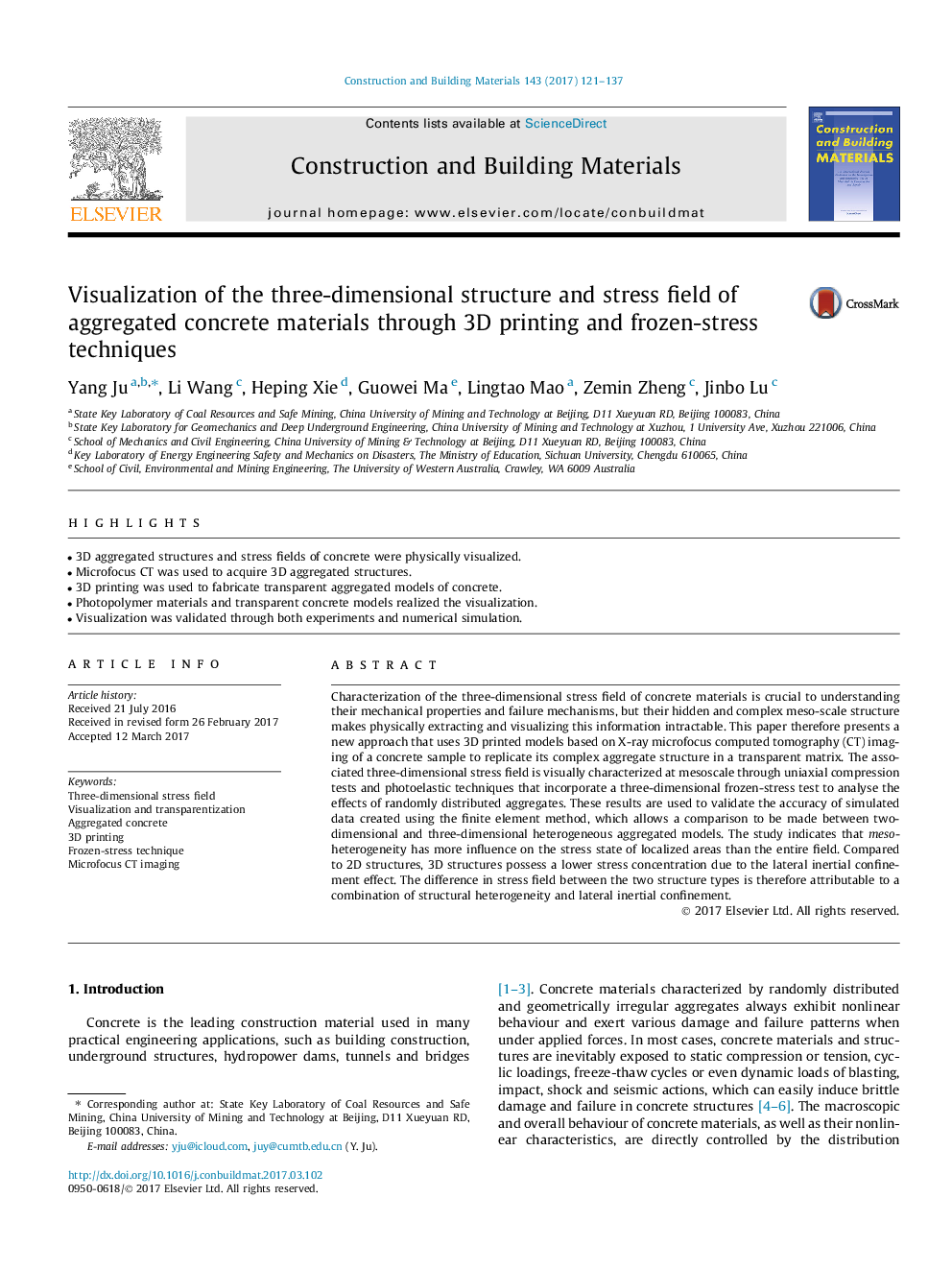| Article ID | Journal | Published Year | Pages | File Type |
|---|---|---|---|---|
| 4913225 | Construction and Building Materials | 2017 | 17 Pages |
Abstract
Characterization of the three-dimensional stress field of concrete materials is crucial to understanding their mechanical properties and failure mechanisms, but their hidden and complex meso-scale structure makes physically extracting and visualizing this information intractable. This paper therefore presents a new approach that uses 3D printed models based on X-ray microfocus computed tomography (CT) imaging of a concrete sample to replicate its complex aggregate structure in a transparent matrix. The associated three-dimensional stress field is visually characterized at mesoscale through uniaxial compression tests and photoelastic techniques that incorporate a three-dimensional frozen-stress test to analyse the effects of randomly distributed aggregates. These results are used to validate the accuracy of simulated data created using the finite element method, which allows a comparison to be made between two-dimensional and three-dimensional heterogeneous aggregated models. The study indicates that meso-heterogeneity has more influence on the stress state of localized areas than the entire field. Compared to 2D structures, 3D structures possess a lower stress concentration due to the lateral inertial confinement effect. The difference in stress field between the two structure types is therefore attributable to a combination of structural heterogeneity and lateral inertial confinement.
Keywords
Related Topics
Physical Sciences and Engineering
Engineering
Civil and Structural Engineering
Authors
Yang Ju, Li Wang, Heping Xie, Guowei Ma, Lingtao Mao, Zemin Zheng, Jinbo Lu,
